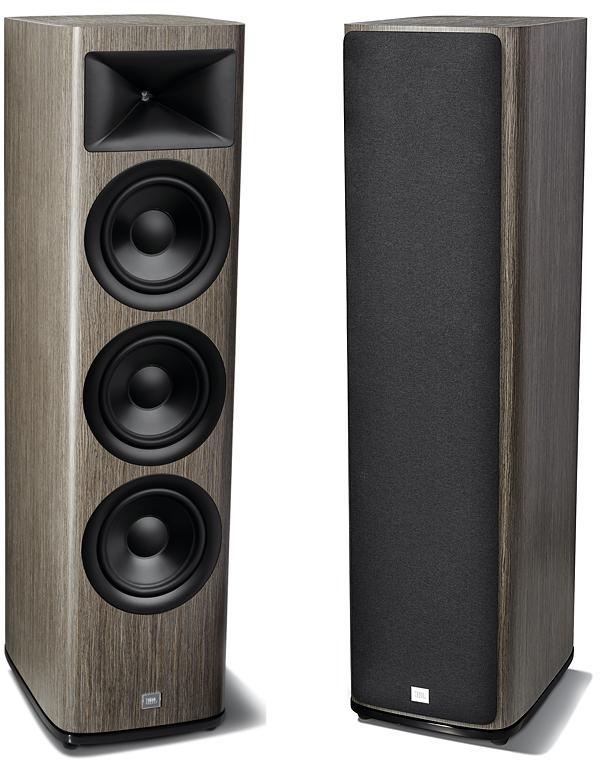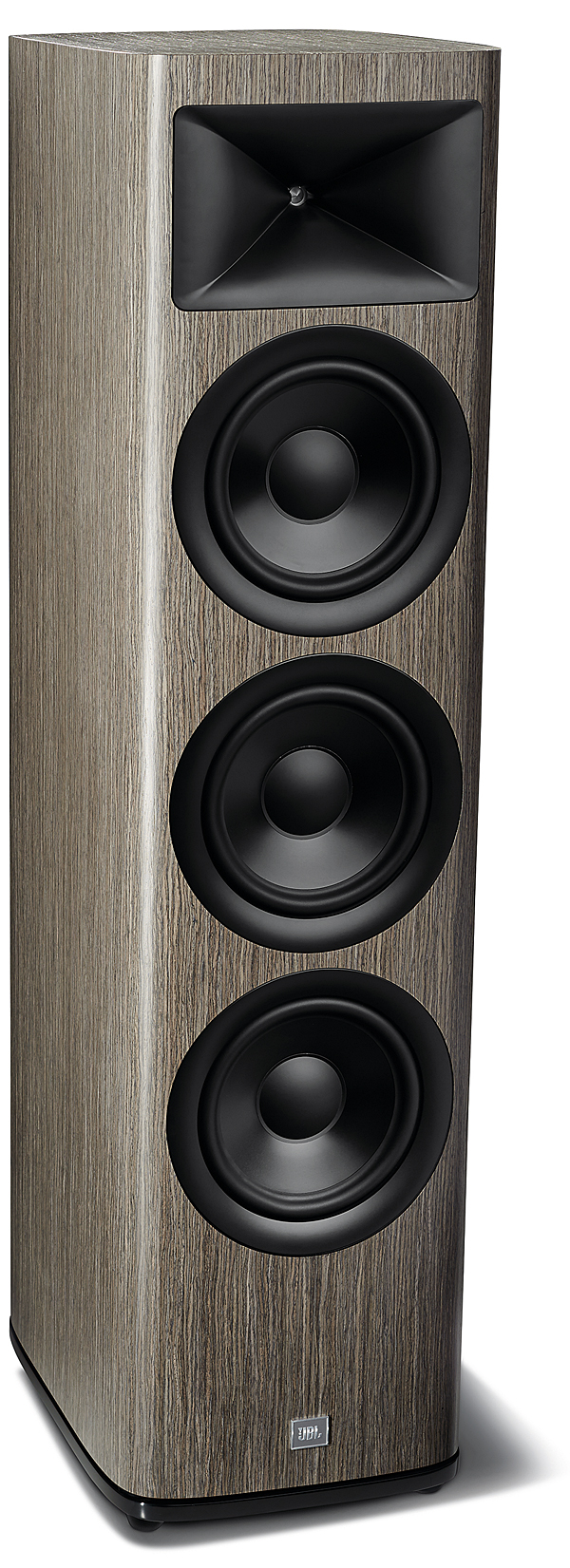JBL HDI-3800 Loudspeaker

 Promising the 'iconic JBL sound' from modern cabinets, we hear the flagship HDI floorstander
Promising the 'iconic JBL sound' from modern cabinets, we hear the flagship HDI floorstander
Some speakers are large, but manage to conceal their bulk through clever styling, but the £4000 HDI-3800 flagship of JBL's 'High-Definition Imaging' series manages to do exactly the opposite. It may only stand 1.1m tall, yet the combination of width and depth – 30cm and almost 42cm respectively – and a particularly upfront driver array makes this a rather imposing speaker to have in the room, with echoes of the company's PA range.
OK, so it's not pretty, and you can hide those drivers with the magnetically-attached grilles supplied, but there are signs the designers have at least tried to make these big, heavy (38kg), bluff speakers more acceptable in a domestic location. The radiused edges of the front baffle softens things a little, and the grey oak wood veneer finish seen here, while unusual, does lighten things a bit, giving the enclosures a more contemporary feel.
Little Welly
Moreover these large, if not huge, speakers need more care with positioning than in choice of partnering amplifier. They might not quite have the suggested 92dB 'party mode sensitivity' but the HDI-3800 still doesn't need a lot of power to 'go loud'. Having cranked-up the Classé amplification [HFN Jun '21] to high levels for last month's review of the huge PMC Fenestria speakers [HFN Aug '21], I was amused to discover just how little welly these JBL boxes required to fill the room with sound at high levels. A 75W/8ohm amplifier is perfectly sufficient.
The HDI-3800 sits atop the HDI range, above the £1499 HDI-1600 standmount and a more compact £2999 HDI-3600 floorstander. There's also a hefty five-driver HDI-4500 centre speaker (£1399) and matching subwoofer – the £1900 HDI-1200P, complete with a 30cm driver and 1kW amp – available to complete a surround sound system.

Common to all but the sub is JBL's 2410H-2 25mm compression tweeter, mounted in the waveguide from which the HDI range takes its prefix. Meanwhile the model numbering indicates – well, almost – the number and size of the mid/bass drivers used: the HDI-1600 uses a single 165mm unit, and the HDI-3600 three of the same; the centre speaker has four 130mm drivers; and the HDI-3800 we have here sports a trio of 8in/200mm units.
Port Authority
In all but the standmount, the drivers operate in a 2.5-way configuration, with the uppermost 200mm driver here covering bass/mid up to 1.8kHz and the two lower units working up to 800Hz, down to a claimed 37Hz. These drivers use what JBL calls an Advanced Aluminium Matrix cone – combining stiffness and low mass – together with a long-throw voice coil, a flux stabilisation ring and a copper shorting ring, designed for maximum output without distortion. The HDI-3800's bass is tuned with two large-diameter ports on the rear panel, above the twin sets of terminals to allow for bi-wiring or bi-amping.
In other words, while the speaker uses no shortage of proprietary technology developed at JBL's design and engineering facility in Northridge, California, the overall design of the speaker is fairly conventional, this placing one significant constraint on their positioning in the listening room. While the instructions suggest the speakers be kept at least 50cm from the side walls, and the diagram indicates the distance from the wall behind them can be somewhat less, the time I spent listening to them suggests otherwise. If they're at all close to the rear wall, the massive bass of which they're capable will dominate the sound at the expense of the midrange and treble.
![]() Magnetic Imaging
Magnetic Imaging
For our listening, until we hauled the speakers to a position at least a metre clear of the walls, I was reminded of those massively-woofered Cerwin Vega! models once all the go with a particular type of listener back in the age of hip-hop and rave. In other words, fun as party speakers, but not what you'd expect from a £4k design. Drag them out into the room, and things improve markedly.
























































